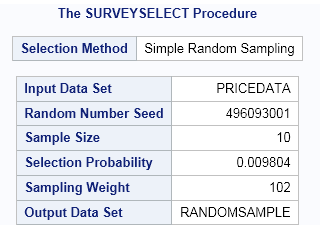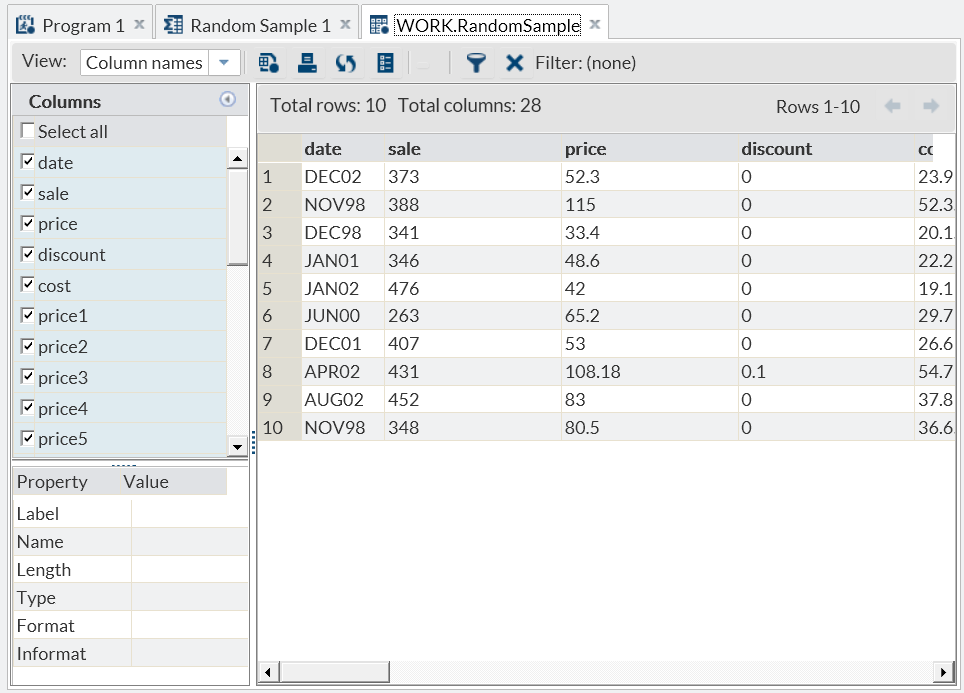Random Sample Task
About the Random Sample Task
The Random Sample task
creates an output table that contains a random sample of the rows
in the input table.
You might use this task
when you need a subset of the data. For example, suppose you want
to audit employee travel expenses in an effort to improve the expense
reporting procedure and possibly reduce expenses. Because you do not
have the resources to examine all expense reports, you can use statistical
sampling to objectively select expense reports for audit.
Assigning Data to Roles
For the Random Sample
task, you must specify an input data source. No roles are required
to run the task.
Setting Options
Copyright © SAS Institute Inc. All rights reserved.


